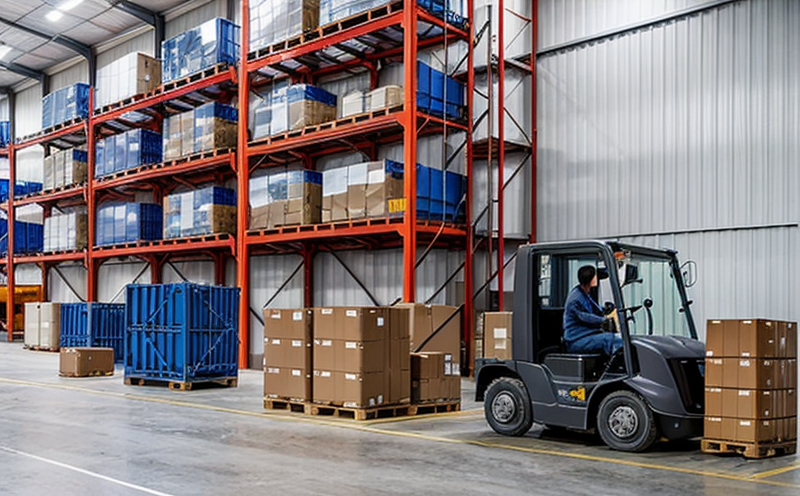ICAO Annex 14 Lighting and Visual Aids Certification Testing
The International Civil Aviation Organization (ICAO) Annex 14 is a cornerstone of international civil aviation standards, providing the technical basis for the design and operation of airports. Among its many provisions, Annex 14 includes specific requirements regarding lighting and visual aids that are integral to ensuring safe navigation and operations within airport environments.
Our laboratory specializes in conducting certification testing for ICAO Annex 14 lighting and visual aids. This service ensures compliance with the stringent standards set forth by this international body, which is critical for aviation safety. The testing process involves rigorous evaluation of various aspects including light intensity, color specification, uniformity, and visibility under different environmental conditions.
Our team employs state-of-the-art equipment to simulate real-world airport scenarios. This allows us to accurately assess the performance of lighting systems in both daylight and night conditions, ensuring they meet or exceed ICAO's stringent requirements. The testing process is meticulously documented, with detailed reports that outline each step taken during the evaluation.
Compliance with Annex 14 is not only a regulatory requirement but also an essential component of maintaining operational safety standards within the aviation industry. By partnering with our laboratory for this certification testing, organizations can ensure their products and systems are fit for purpose and meet global aviation safety standards.
The importance of lighting and visual aids cannot be overstated in aviation. Poor visibility or incorrect signaling can lead to accidents, delays, and significant operational disruptions. Our service ensures that any product or system you develop meets the highest international standards, thereby safeguarding against such risks.
Our approach is comprehensive, encompassing all relevant aspects of lighting and visual aids as outlined in Annex 14. This includes but is not limited to runway lights, taxiway lights, obstacle marking lights, and other critical visual aids that play a pivotal role in airport operations. By leveraging our expertise and cutting-edge facilities, we provide you with the confidence that your products will pass rigorous certification testing.
In conclusion, investing in ICAO Annex 14 lighting and visual aids certification testing is an essential step towards ensuring compliance and enhancing safety within the aviation sector. Our laboratory stands ready to support your organization through this process, offering unparalleled expertise and reliability.
Eurolab Advantages
At Eurolab, we pride ourselves on providing comprehensive testing services that go beyond mere compliance. Our team of experts ensures that every aspect of your product or system is thoroughly evaluated against ICAO Annex 14 standards. With years of experience and cutting-edge facilities, our laboratory offers several key advantages:
- Comprehensive Testing Capabilities: We can assess all relevant aspects of lighting and visual aids as outlined in Annex 14.
- State-of-the-Art Equipment: Our laboratory is equipped with the latest technology to simulate real-world conditions accurately.
- Experienced Professionals: Our team comprises highly skilled engineers and technicians who understand the nuances of aviation safety standards.
- Rigorous Documentation: Detailed reports are provided after each testing session, ensuring transparency and traceability.
- Global Recognition: Eurolab is accredited to numerous international standards, including those set by ICAO.
By choosing Eurolab for your certification testing needs, you are partnering with a trusted leader in the aviation industry. Our commitment to excellence ensures that every product or system tested meets the highest global safety and operational standards.
Environmental and Sustainability Contributions
The aerospace and aviation industries have a significant environmental footprint, particularly when it comes to lighting systems. By ensuring compliance with ICAO Annex 14 through our certification testing services, we contribute positively towards sustainability efforts in several ways:
- Energy Efficiency: Properly designed and tested lighting ensures minimal energy consumption without compromising on performance.
- Emissions Reduction: Efficient lighting systems lead to reduced emissions from aircraft operations, contributing to cleaner skies.
- Resource Optimization: Our testing helps manufacturers optimize the use of materials, leading to less waste and lower resource consumption.
- Pollution Prevention: By enhancing visibility and safety, our services reduce the likelihood of accidents that could otherwise lead to environmental hazards.
At Eurolab, we are committed to supporting sustainable practices within the aviation sector. Our certification testing not only ensures compliance with international standards but also promotes environmentally responsible design and operation.
Use Cases and Application Examples
| Use Case | Description |
|---|---|
| Runway Lighting Systems | Testing runway lighting to ensure it meets ICAO Annex 14 requirements for safe navigation and operation during both day and night conditions. |
| Taxiway Lighting Systems | Evaluating taxiway lights to guarantee they provide adequate visibility for aircraft moving between runways and terminals. |
| Obstacle Marking Lights | Assessing obstacle marking lights to ensure clear identification of obstacles within the airport environment. |
| Approach Lighting Systems | Testing approach lighting systems for precision landings, ensuring pilots have sufficient visual cues during final approach. |
| Visual Aids for Obstruction Marking | Evaluating the performance of obstruction marking lights and signs to prevent collisions with aircraft and other objects within the airport. |
The above examples highlight some of the critical components that undergo certification testing under ICAO Annex 14. By ensuring these systems meet stringent standards, we contribute to a safer and more efficient aviation environment.





